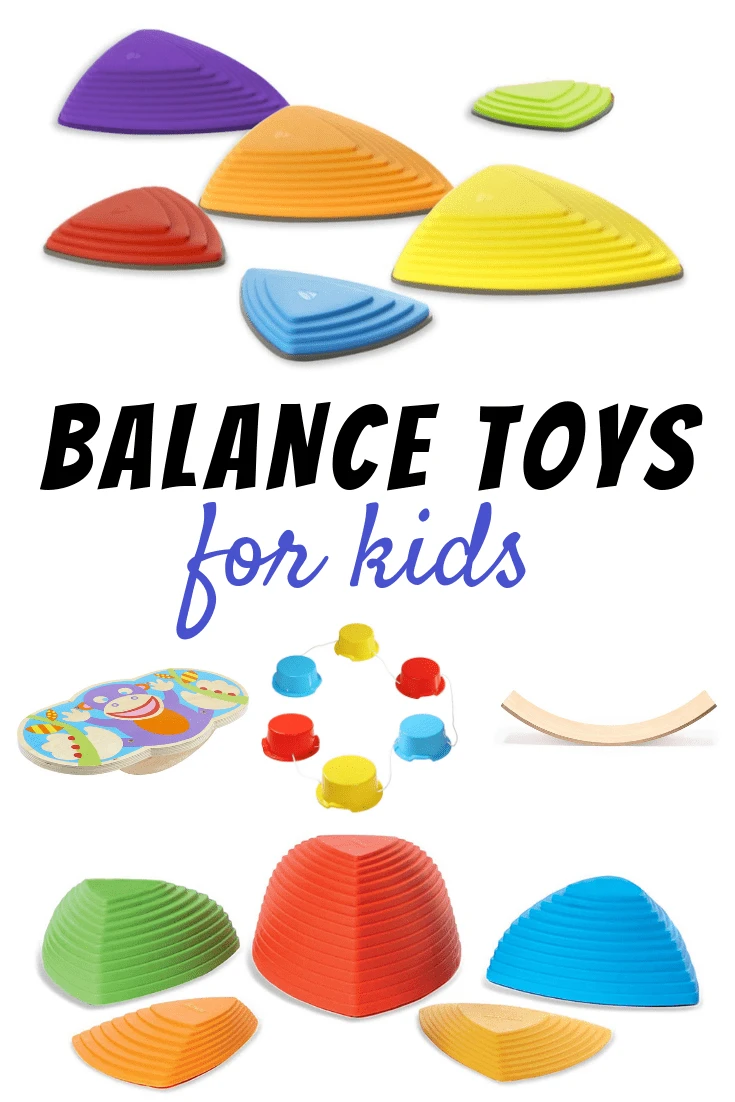Concerned about your child’s balance? Does something seem off with your child’s gross motor and sensory processing? Balance allows you to hold your body upright and steady without falling down. No matter if you’re moving or standing still, or have your eyes open or closed. The vestibular system is closely linked to sensory processing, so understanding the vestibular sense within the context of sensory integration is critical.

Understanding the Vestibular Sense
We grow up learning that the five senses are taste, smell, sight, sound, and touch. However, there are additional critical senses that are often overlooked. We’ve discussed the proprioceptive system in the past. Today, we’re going to address the vestibular system, the sense that delivers sensory information to your brain about balance and movement.
On a more complicated level, the vestibular system generates complex information about where your body is in space. This sixth sense coordinates movements in combination with balance. It is responsible for keeping you upright and it creates rapid reflexes based on the stimulus received from the environment.
Compared to the other senses, the vestibular sense operates at a much faster pace. On that note, you may be surprised to learn that this system is stunningly small and fits within the inner ear. While tiny, the vestibular system is intricately complex and enables you to process positioning, acceleration, and movement.
The Relationship to Sensory Processing
Your brain receives sensory data from all of your senses rapidly at all times. It must process this data quickly so that you can live in and respond to your environment. These sensory responses are responsible for reflexes, taste preferences, the ability to identify smells, and much more.
A sensory processing disorder may be diagnosed when your child’s response to various sensory inputs interferes with daily life. Furthermore, sensory processing is related to the five commonly-known senses as well as to the misunderstood sixth sense.
Given the complexity of the senses, you may have a better understanding of why sensory processing disorders are misunderstood. This also explains why children with vestibular sensory processing disorders display extreme behaviors.
These behaviors differ from other children with similiar disorders. More than that, your child’s behaviors may seem to change by the day. Each child is unique, experiencing the world in his or her own way. Likewise, your child responds to inputs individually. As an example, some kids may love the taste of applesauce, and others may be disgusted by its texture.
What Is a Vestibular Disorder?
This is a blanket term that describes an improper function of this system. These disorders relate to how the brain interprets data from this system. While these disorders commonly feature balance and spatial orientation issues, they can have a much more profound impact.
The data provided to the brain from the vestibular structures allows the brain to interpret other sensory data. For example, it helps you to quickly analyze visual data, maintain muscle tone and more based on various stimuli.
Children with a vestibular disorder may be hyposensitive. This means that your child may require or crave extra stimuli from activities involving movement and balance. Children may also be hypersensitive, which has the opposite effect.
To complicate matters, some children with vestibular dysfunction may show behaviors of being hyposensitive and hypersensitive at the same time. Other children may show hyposensitive signs one day and may appear to be hypersensitive the next day. Because of this, parents should be aware of symptoms for hypersensitivity and hyposensitivity.
Signs of Vestibular Dysfunction
Children experience vestibular sense disorders in many ways. So, signs of a vestibular disorder can vary dramatically. With that said, generally speaking, the symptoms of a vestibular disorder include appearing distracted, lazy, fearful, uncoordinated, and hyperactive.

How do these symptoms appear in a child’s everyday life?
- A child with a vestibular sense processing disorder may:
- Have an overwhelming preference to remain still
- Struggle in school with math, reading, and writing
- Appear to be lost or confused frequently
- Struggle to locate common objects when asked to do so
- Prefer to keep his or her feet on the ground, such as by avoiding jumping, playground equipment and more
- Walk with considerable care and focus
- Appear to be uncoordinated or fall frequently
- Have a slouched posture or prefer to lay down
- Support his or her head by the hand when sitting
- Complain about being nauseous or dizzy
- Get motion sickness easily
- Focus frequently on moving objects
- Seem oblivious to activities that are dangerous, such as jumping off of elevated objects to climbing high above the ground
- Enjoy twirling or spinning without seeming to get dizzy
- Move constantly, such as by rocking back and forth, fidgeting or tilting the head around
- Have trouble focusing unless fidgeting or moving
When to Seek Vestibular Therapy
Once diagnosed with a sensory disorder, your doctor will provide a treatment plan. Specialized therapy sessions may be recommended and have been highly effective at alleviating bothersome symptoms in many people.
An occupational therapist may be necessary and can help a great deal. The therapist identifies the child’s unique challenges and symptoms before creating a customized treatment plan.
As guided by a therapist, well-planned activities should be completed at home. The therapist and parents will take into account the child’s specific disorder and comfort level. However, some suggested activities include swimming, log rolling, laying on the stomach, hanging upside down on playground equipment and more.
The purpose of these vestibular therapy exercises is to improve how the body receives and processes data. This includes visual orientation, balance, movement and more. Initially, you may notice that your child’s symptoms seemingly worsen, but this is short-lived.
When your child cannot experience and respond to the world in an expected way, stress and sadness are common. However, with a medical diagnosis and regular vestibular therapy sessions, many bothersome symptoms can be alleviated or managed.
Balance Activities for Kids
Best Balance Toys for Kids
- Balance Board
- River Stones
- Hilltops
- Balance Buckets
- Balance Cushion
- Wobble Balance Board
- Balance Hemispheres
- Slack Line

